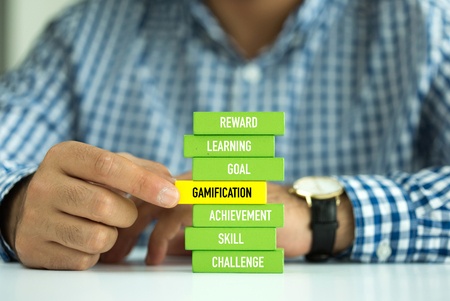Video - Expert Tips: Creating Learning Videos
Learning videos have become an important part of the blended learning mix. If you're new to video, creating one might seem daunting. So what is the...

 Have you ever been sent to training that just didn’t ring true? Perhaps it presented steps as too simple (“Then just get everyone to agree and implement your plan”) or offered unworkable performance tips (“Set aside a half-hour every day to reflect on your obstacles and achievements”) or included a tipoff that the designer had no idea about the reality of your work (My postal-service husband says he laughs at the unrealistic training videos he’s assigned to watch, because “the customers always have exact change”.)
Have you ever been sent to training that just didn’t ring true? Perhaps it presented steps as too simple (“Then just get everyone to agree and implement your plan”) or offered unworkable performance tips (“Set aside a half-hour every day to reflect on your obstacles and achievements”) or included a tipoff that the designer had no idea about the reality of your work (My postal-service husband says he laughs at the unrealistic training videos he’s assigned to watch, because “the customers always have exact change”.)
Learning Experience Design (LxD) is a new-ish field growing out of a mix of Web user experience thinking and experiential learning theory. It makes more room for the learner than many traditional approaches and acknowledges that learning happens – and is applied/transferred – in contexts outside of a “course”. It looks at what the learner experiences – not just what information they access but how it makes them feel: Safe? Bored? Comfortable? Do we understand what happens to the learner as they acquire and attempt to apply new learning? Is material aesthetically pleasing? Is it an elegant experience?
Virtual classroom work can - especially for those involved in blended learning endeavors - be an important part of a robust learning experience. Some elements of experience design:
Empathy
Experience design begins with empathizing with the worker/learner’s daily existence rather than approaching from a “here’s what’s wrong, go design training to fix it” stance. The examples I opened with reveal a failure to empathize with the learner’s reality – dismissing real difficulties, failing to understand the specifics of their day, or overlooking real frustrations and time-killers. Empathy means walking in the learners’ shoes for a bit: We teach them the proper procedures for carrying out tasks but do nothing about the supervisor back on the job who tells them to ignore what they’ve just been taught. Or they don’t need training at all: They could perform just fine if the organization made it easier to acquire needed tools and other resources. Interestingly, the era of COVID-19 has in many ways brought us to more empathetic approaches to our learners, as we’ve become more tolerant of toddlers and dogs wandering into virtual meetings and making accommodations for people working from home with new distractions and stresses, different technology, low bandwidth, and poor lighting.
Personas
Creating learner personas involves writing a detailed description of some users. It’s not as demographic-focused as the usual data we get about learners; rather, it’s more, “Who are these people?” What’s their day like? What are their frustrations? What are their goals? Why are they enrolled in this class? What are their work relationships like? What else is going on in their lives? Back to the point about the COVID era, we are now dealing with workers doing their best to work from home – while also homeschooling kids and sharing cramped makeshift office quarters with a partner. Again: Who is this person? Knowing who your audience is will help you build more effective learning experiences for them. In developing learner personas be careful, though, to create personas of learners you’ll actually have and not just the ones you want. See this article for examples of personas and how to create them.
Journey Mapping (or Learner Experience Map)
In understanding journey mapping, let’s start somewhere else, with an older retail exercise on creating a customer journey map. Many organizations use this to understand the experience a customer has with their brand. Think of a time you had an online retail interaction. You saw an ad for a product, clicked a link, and went to a site to order it. Maybe you needed to make an exchange or return. Think about all the steps in that process and what went well, or not, on your journey. What do you like, or not like, about shopping on Amazon, or Zappos, or some other “brand”? What delighted you? (I recently received an order that included a few additional products as thank-you gifts) What frustrated you? (Trying to contact a customer-service phone line that was only available a few hours a day and always warned of a long wait.) Don’t forget colors, layout navigation, and other site design factors. And consider personas: How would the experience have been for your mother-in-law? Your neighbor who has arthritis? Or your smartphone-only using college student?
Like your journey with that brand, our learners have similar journeys with our learning products. It often begins long before we’ve even met them, from feedback in a performance review telling them to correct a performance problem, or an interest they want to pursue, or a notice from the LMS. Work from your personas (or real live learners if you have access to them).
Use a spreadsheet or similar tool to outline steps in the process, from first awareness to after-training:
Notice from LMS = Annoyance at having to make time for a mandatory compliance class? - Or - Pleased at being notified of a course they requested?
Introduction of material = Resistance at being told they must change? - Or - Worry that they might not be able to perform in the new way? - Or - Excited that a clumsy process is finally being streamlined?
What do you need to do to support the learner at each step? How can you help the experience become more cohesive for them, so they aren’t dealing with each step as another part of the learning environment they need to decipher?
Sketching out the learner’s journey and understanding and empathizing with their touch points and pain points, will help you to craft a more robust, cohesive, and effective learning experience for them.
Resources:
Hofmann, Jennifer (2018). Blended Learning. ATD: Alexandria, VA.
Bozarth, Jane (2020). Less Content, More Learner: An Overview of LxD. The Learning Guild: Santa Rosa CA. (Includes some sample journey mapping tools.)
Boller, S. & Fletcher (2020). Design Thinking for Training and Development: Creating Learner Journeys that Get Results. ATD: Alexandria, VA.

Learning videos have become an important part of the blended learning mix. If you're new to video, creating one might seem daunting. So what is the...

5 Recommendations To Maximize the Learning Experience, and what Virtual Learning Experts™ Need to Know. This is part of an ongoing column by Virtual...

5 Recommendations To Maximize the Learning Experience and What Virtual Learning Experts™ Need to Know.This is part of an ongoing column byVirtual...